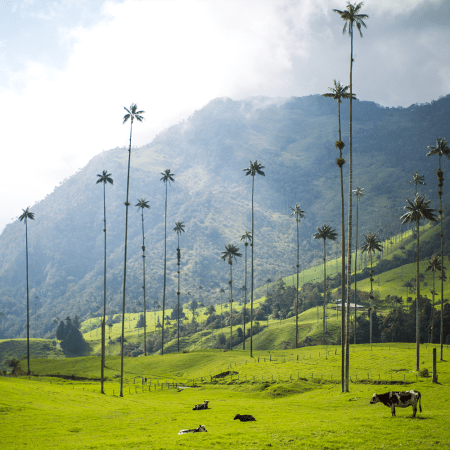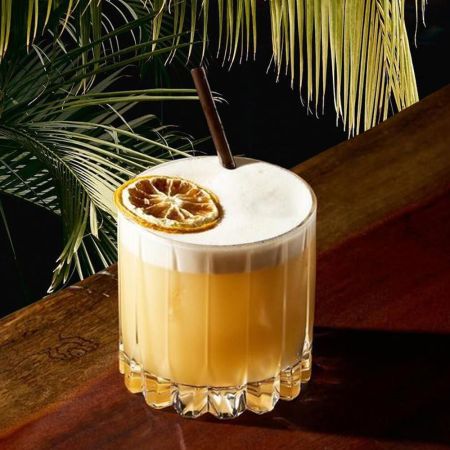In the minds, and stomachs, of many Americans, Vietnamese cuisine often gets reduced to a single dish: pho. Yet, the country’s culinary repertoire is as tantalizing as it is diverse. Even that seemingly simple bowl of pho is not a one-size-fits-all commodity, of course. To suggest so would be akin to saying that there were no regional differences to be found among Mexican tacos, for instance.
Food is a feeling, a window into the routines and rituals of everyday life. “The way I feel when I eat pho, you don’t feel pressure, you just want to come and eat and have a good environment,” says Khoa Nguyen, a long-time tour guide based in Saigon who now operates bespoke travel company In Country Tours with his wife Michelle. “It’s about more than the pho. You want the pho to be good, but it’s more than that.”
When traveling to Vietnam, signature dishes serve as culinary landmarks. Plotting out an itinerary therefore isn’t only about seeing this monument in that city, but eating its staple cuisine and most popular and notable dishes. That’s how the real exploration is done.
Because food is culture, and sharing and slurping over a bowl of noodles — whether bún chả in Hanoi, bún bò Huế in Huế, cao lầu in Hội An or pho anywhere and everywhere in between — is how a real appreciation for a particular locale and its people is gained. Sampling from one city and village to the next across Vietnam is the best way to get a glimpse, and a taste, for yourself.

Phở
Pho hails from the northern portion of Vietnam, and is now ubiquitous across the country. Ubiquitous, but not universal, because its regional variations are so pronounced.
Even within the same locale, no two bowls of pho are the same. “Every family has a secret broth, a different focus, more of this or less of that,” Nguyen says. We were dining at Pho Hung in Saigon, run by a pair of sisters for the past 14 years. It’s the bowl of pho I consider to be my favorite in the world — enormous, customizable and built on a broth that simmers overnight for 10 hours, with dozens of menu variations incorporating different bits of beef — and it’s one that Nguyen introduced me to within an hour of the first time we met, on my inaugural visit to the country in 2018. We went back again when I visited this past fall. “I’m really keen on the broth here, that’s the most important,” Nguyen says.
It’s also representative of southern pho. “In the south, we have more herbs and sauces to put into it,” Nguyen says. Big bowls with stacks of herbs are given to diners, alongside multiple condiments, such as chili sauce and bean sauce. Nguyen keeps the bean sauce out of the pho, dipping morsels of beef into it. “We use that separately from the broth, to dip into and enjoy with the meat only,” Nguyen says. A squirt of spicy chili sauce, meanwhile, can change the entire bowl of pho. “A tiny bit makes the whole game different. It changes the game,” Nguyen says.
Northern pho, for its part, tends to showcase more aromatics in the broth, such as cinnamon, cloves, star anise and ginger. Its broth is prized for its clarity. In central Vietnam, more lemongrass is used. In the south, it’s sweeter.
At Four Seasons Resort The Nam Hai in Hội An, their restaurants offer a side-by-side pho sampler, pitting local Hội An beef pho against Hanoi beef pho. It offered incredible and immediate comparison between the two, with Hội An’s broth being saltier, and the bowl topped with crunchy, crumbled peanuts.
If pho is a feeling, then the most memorable pho dining experience I ever had was in Hanoi, at Phở Bưng Hàng Trống. The “restaurant” is actually just a small room off the side of a family residence, and to find it, you need to walk down a dim, unmarked alley and climb a flight of stairs, taking off your shoes at the top and entering the little public dining area. There’s no menu. No ordering. Within a moment of sitting down, a steaming hot bowl of aromatically intoxicating beef pho was presented with a plate of fried breadsticks known as banh quay, or Chinese youtiao, to dip into the broth, with bowls of vinegar, garlic and chilies available on a few low-slung, communal tables.
The woman running the joint didn’t speak any English, but we shared a few laughs as she pointed at which tattoos of mine she liked, and elsewhere, I joined the conversation of a few other diners. It cost 40,000 dong, or about $1.50, and is a memory I’ll always carry with me and look back on with fondness. Sounds like a good deal, right?

Bún Chả
While pho is a countrywide exploratory journey, there’s no denying where bún chả is from. “Bún chả is originally from here, and only really found here in Hanoi,” says Tham Nguyen, a Hanoi-based tour guide who took me on an evening food crawl across the city. You might be able to find a bowl in other places, but there’s no denying its home is in Hanoi, and that it’s the city’s signature dish.
Bún chả consists of grilled or barbecued pork, potentially in the form of meatballs or skewered slices, either atop or directly in a sweet, light broth-like dipping sauce flavored with fish sauce, herbs, garlic, sugar and other ingredients. It’s served with a mound of rice noodles as well as an assortment of green leafy vegetables and herbs. “One of the things that make Vietnamese food so special is the use of herbs,” Nguyen says. Chilies, garlic and fish sauce are served on the side to customize and amp up the flavor in any direction you choose.

Bánh Xèo
Bánh xèo, which in some ways can be considered a Vietnamese crepe, is a textural masterpiece. While its exact origins are a bit murky, most think the dish originally hails from the villages around the Mekong delta region. Crispy rice flour pancakes, yellow in color from turmeric, are fried up and stuffed with toppings such as bean sprouts, shrimp, leafy greens and herbs and pickled vegetables. The dish is served with nước chấm dipping sauce.
Around the Mekong, an individual bánh xèo is large, taking up a full plate, and is cut into pieces with a scissor for serving. In other areas, different toppings may be used and sizing is also smaller. In central Vietnam, for instance, they’re handheld, and back at The Nam Hai in Hội An, they serve a culinary mashup (of what was already a culinary mashup) in the form of bánh xèo tacos. The larger renditions may be served fully stuffed and ready to eat, while smaller offerings may be served ready to roll up at the table, with an array of toppings served alongside a stack of bánh xèo and rice paper.

Bánh Cuốn
Bánh cuốn are jiggly little rice rolls prized for their texture, contrasted with crunchy fried shallots and onions added as a topping. The dish hails from Northern Vietnam, but not necessarily where many believe.
“Lots of people think bánh cuốn is from Hanoi but it comes from the villages outside,” says Tham Nguyen. Specifically, she says they hail from the area surrounding Ninh Bình. Bánh cuốn may be stuffed with minced pork or wood ear mushrooms and is served with vegetables such as cucumber slices, and nước chấm for dipping.
Vietnamese Coffee Is Not Just a Trend
Why the country’s famed robusta beans should have been in your kitchen this whole timeVietnamese Fish Sauce
You might not be ordering fish sauce itself, but wherever you are in Vietnam, you’ll be eating dishes flavored with it, and finding it as a condiment to deploy at will. It’s important to know a bit more about it, then, and I received a master class in the subject while staying at the Sofitel Legend Metropole Hanoi.
“In Vietnam, so much of our flavor comes from fish sauce,” a server at the hotel’s Spice Garden restaurant told me. They take it seriously enough at the restaurant that they roll out a cart with three varieties of fish sauce for diners to use, one of which was infused with pineapple and another with a combination of sweet and sour flavors to use as a dipping sauce.
The process for making fish sauce is intricate and time-intensive, requiring at least a few months if not as much as eight months or a year. Anchovies are layered with salt filling up a ceramic jar or container left hanging, dripping out what amounts to a super concentrated fish sauce which is then diluted with water before being bottled or sold. A second press can be made with the same batch of ingredients, which will end up lighter and less salty in the next go-round.
At Spice Garden, the lineup of fish sauces was used to accompany an extravagant menu incorporating dishes such as spring rolls, fried morning glory, pork sausages skewered on sugar cane, shaking beef and caramelized river fish. If it’s Vietnamese fine dining you’re after in Hanoi, there may not be a better choice anywhere in town. But you can be certain that you’ll find a bottle of fish sauce atop just about any dining table in the country.

Bánh Mi
Bánh mi is one of the world’s best sandwiches, a display of culinary fusion before such terms existed stemming from the colonial French bringing baguettes to Vietnam, and the bread eventually becoming a staple food in the country. A thin, handheld baguette is stuffed with, well, just about anything, but often with pate and mounds of cilantro and other herbs, along with crunchy slices of carrots, cucumbers and pickles.
Pork, egg, Vietnamese sausage and chicken are among other popular fillings, and all of the above can be combined together or mixed with other ingredients, with chili sauce and mayonnaise as common condiments. Regionally, bánh mi varies in terms of sizing, how crispy the bread is, and how many toppings and herbs are stuffed inside.

Cao Lầu
Cao lầu is unique in that it’s not only from a specific place, Hội An, but is only made there. That’s because a single family — or really, two branches of the same family — is the only producer of what’s considered to be the authentic, legitimate noodles definitive of the dish. Thick and toothsome, and darkened by the use of ash (from burning a very specific type of tree) mixed in with water (from a very specific source) while making the noodles, the slightly smoky strands are the dish’s signature star, and the family delivers them to every restaurant around the city where they’re served.
“You can tell when the noodles aren’t theirs,” says chef Trang Tran, who runs daily cooking classes and market tours at The Nam Hai’s Cooking Academy. “They make it for everyone in the market, and everyone around town. Only in Hội An can you enjoy this dish.”
Even a chef with the resources of a luxury hotel group behind her doesn’t make her own noodles. “We know the flavors and ingredients, but not exactly how much or exactly how to make them,” Tran says. The noodles are served with a bit of sauce or thick broth in the bowl, with sliced pork char siu, lettuce, bean sprouts and other vegetables, and a smattering of condiments. Around Hội An, try the dish at restaurants such as Quán Cao lầu Bá Lễ or Morning Glory.
Hội An has other regional specialties to explore, even if cao lầu tends to hog the spotlight. Be sure to try mi quang, turmeric-colored noodles served with ingredients such as pineapple, shrimp and quail eggs, and white rose dumplings, delicate rice paper dumplings stuffed with mushrooms, shrimp and bean sprouts that look the part of their namesake.

Bún Bò Huế
Bún bò Huế is a beef and rice noodle soup hailing from Huế, and is distinguished from pho based on several key points. “This is 100% from Huế, and the flavor is totally different from pho but it sort of looks like it,” Tran says.
The soup is served with crab meatballs as well as chunks of blood pudding. “It’s also served with mixed salad and is quite spicier,” Tran says. The seafood’s impact changes the blueprint of the broth, while along with the blood pudding there’s a different range of textures to be found.
“As a food lover, you have to visit Huế,” Tran says. “It’s our old capital and has a lot of traditional food specialties.” Beyond bún bò Huế, the heritage dishes of the former capital city include bánh bột lọc Huế, clear, chewy tapioca dumplings stuffed with pork belly and or shrimp; banh ep Huế, flattened tapioca flour pancakes served with a load of toppings and herbs; and bánh khoái Huế, thick, deep fried pancakes stuffed with ingredients such as shrimp, pork and bean sprouts, and served with a peanut dipping sauce.

Chả Cá
Chả cá is a pan-fried fish dish best served in an interactive format, where it’s cooked up on a tabletop burner with diners adding in their preferred levels of spices and toppings. “This is another specialty of Hanoi,” says Tham Nguyen.
Freshwater lake fish such as catfish or snakehead fish is fried with green onion, dill and turmeric, and served with chilies, peanuts, rice noodles and shrimp paste, or for the less pungent-inclined, fish sauce. Chả Cá Thăng Long is a popular destination specializing in the aromatic, colorful dish.

Egg Coffee, Salt Coffee & Coconut Coffee, Oh My
Cafe culture is omnipresent in Vietnam, and beyond sampling the coffee beans grown in the country, there are a number of signature serves you’ll want to try while cafe-hopping. To my delight, as someone who would drink iced coffee even if it was snowing outside, the default serving for coffee in hot, humid Vietnam is iced — ca phe da — and coffee is traditionally prepared using a phin, a metallic filter for drip coffee.
As with all the foods we’ve been discussing, coffee is different in the north and south. Ca phe Hanoi, the north’s standard, is thick, sweet and short, while ca phe Saigon is a long coffee, more of an iced Americano than iced espresso, by way of broad comparison. Ca phe sua, meanwhile, is what has been brought over stateside to be “Vietnamese iced coffee,” made with a heavy pour of condensed milk.
But we’re just getting started. In Hanoi, Cafe Giảng is famed for its specialty egg coffee, with egg and sugar blended together to create a stiff custard-type texture and dolloped atop the coffee. The result is akin to an eggy cappuccino. Many shops in the city serve a riff on the drink, some perhaps flavored with cinnamon, matcha or other ingredients. They also serve egg rum and egg beer, so feel free to keep on taste testing eggy beverages galore.
Other coffee riffs to explore include salt coffee, with salt included in the process of roasting the beans, delivering a slightly salted, savory tinge to the brew, and coconut coffee, with coconut milk whipped up and potentially blended with ice to create coconut milk ice cream, added to the coffee.
This article was featured in the InsideHook newsletter. Sign up now.

























